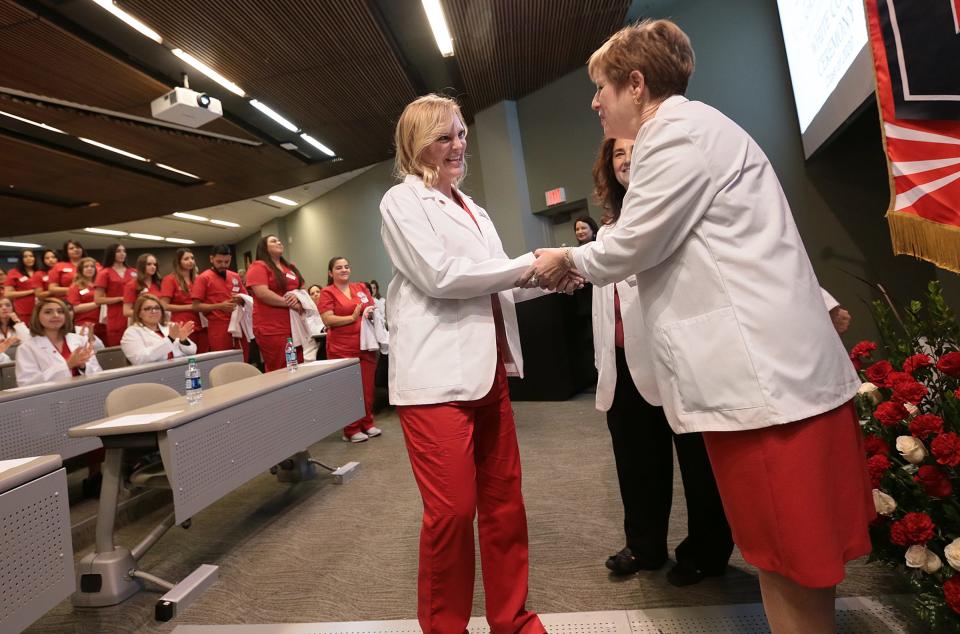HEAL Texans Act, bridging the health care gap for Texans: Sen. César J. Blanco
- Oops!Something went wrong.Please try again later.
When I travel across Far West Texas, the lack of health care access locally is the No. 1 concern I hear about from constituents.
When I talk to senior citizens, they often say, “West Texas is a great place to retire, but a bad place to grow old.”
When I talk to women and new mothers, they tell me about their struggles in finding basic pre-natal and reproductive care. They tell me how they need to travel hundreds of miles away because there are no providers in the area to offer something as basic as a sonogram.
I’ve heard from a mother, with four kids in rural West Texas, that she must wait weeks or months to get her kids the pediatric care they need because the pediatrician is only in town every so often.
These are the stories I hear too often. Every single one of the eight counties I represent is designated as a “Primary Care Health Professional Shortage Area.” But these stories and these challenges are not limited to Far West Texas.
Our state is facing a health care access and workforce crisis.

Physician shortage is worsening
We do not have the primary care workforce to care for Texans. According to the Department of State Health Services (DSHS) our current medical education system and “Physician Pipeline Model” will not be enough to remedy our primary care shortage.
The current physician shortage is worsening, and fewer physicians are practicing in rural or underserved areas. To make matters worse, physicians in rural areas are also closer to retirement age than physicians in urban areas. There are 437 Primary Care Health Professional Shortage Areas in Texas, where an insufficient number of providers are available to care for our growing population. That’s 230 counties (90%) within Texas are classified as primary care health professional shortage areas impacting over 7.5 million people. Another 15 million Texans, half the population of the state, live in mental health professional shortage areas.
We need an all-hands-on-deck approach and doing nothing is not an option.
That’s why I filed Senate Bill 1700, the Healthcare Expanded and Accessed Locally for Texans Act, or the HEAL Texans Act.
The HEAL Texans Act will expand access and options to quality health care for Texans closer to home and address our state’s health care workforce shortage. This bill will modernize Texas’ outdated occupational licensing laws that are holding back Advanced Practice Nurse Practitioners (APRNs), like nurse practitioners from providing primary care to underserved Texans.
More:Poll finds support for Sen. César Blanco's HEAL Texans Act to aid health care access
Requirement hurts access to primary care
Texas is one of a handful of states that does not allow nurse practitioners to provide primary care unless they have a delegation contract with a physician. This contractual delegation requirement hurts access to primary care and leaves Texans with fewer health care options, especially in rural and underserved areas.
The HEAL Texans Act would allow nurse practitioners to practice to the full extent of their professional ability, doing the work they already do — just without the administrative and financial barriers of having a supervising physician.
Twenty-seven other states have already done this. Texas is behind the curve when we should be leading. Texas ended direct, on-site physician supervision in 2013.
Current law only requires a supervising physician to check in with a monthly phone call and review only one chart delivered by nurse practitioners. Similarly, current law does not require the supervising physician to see any patients, be on-site where the nurse practitioner works or even work in the same city or county.
Data from other states that have removed barriers to nurse practitioners’ authority show: increased access to primary care for patients, especially in rural and primary care health professional shortage areas; more options in the health care market for patients; lower health care costs for patients; better patient outcomes; and a more efficient health care system for everyone.
More:Texas didn't get permits for razor-wire fence at border in latest Gov. Abbott-Biden standoff
90% of Texans want more options
In addition, all branches of our U.S. military and VA Hospitals give nurse practitioners full practice authority on bases and VA hospitals across Texas. If it’s good enough for our servicemembers and veterans, it should be good enough for all Texans! And most importantly, if you like and have access to your doctor, you can keep your doctor.
Last week, a statewide poll commissioned by Texans for Healthcare Access found that 90% of Texans think that it should be easier for patients to receive care from APRNs and 81% back the removal of the costly contract requirement for APRNs. With 90% of the state designated as a health profession shortage area, it is not surprising that 90% of Texans want more options and easier access to health care.
This is not about nurses.
This is not about doctors.
This is about Texans getting the quality health care they need closer to home. And we can deliver better access and better options by passing the HEAL Texans Act.
César J. Blanco, D-El Paso, is Texas State Senator, District 29.
This article originally appeared on El Paso Times: HEAL Texans Act, bridging the health care gap: Sen. César J. Blanco

